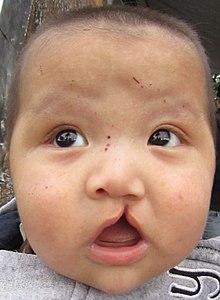Cleft lip and cleft palate types and characteristics
- Cleft lip:
- Unilateral incomplete
- Unilateral complete
- Bilateral complete
- Microform cleft
- Importance of early evaluation for severity determination
- Cleft palate:
- Complete (soft and hard palate)
- Incomplete (cleft soft palate)
- Velopharyngeal insufficiency (VPI)
- Speech articulation errors and compensatory misarticulations
- Submucous cleft palate
Surgical repair and treatment options
- Surgical repair of cleft lip
- Long-term outcomes and scar appearance
- Treatment options for cleft palate
- Submucous cleft palate and its diagnosis challenges
Dental problems associated with cleft lip and palate
- Delayed tooth development in individuals with cleft lip and palate (CLP)
- Fused teeth
- Missing teeth, particularly lateral incisors
- Extra teeth erupting behind normal teeth
- Hypomineralised and hypoplastic enamel in individuals with CLP
- Impact of dental issues on oral hygiene, cavities, and occlusion
Complications and related issues
- Feeding difficulties in infants with cleft lip and palate
- Importance of upright feeding position and gravity feeding techniques
- Middle ear infections and hearing loss in individuals with cleft
- Relationship between hearing and speech development
- Need for speech therapy in individuals with cleft lip and palate
- Impact of cleft lip and palate on self-esteem
- Influence on social skills and behavior
- Adverse effects on self-concept
- Research on psychosocial development of individuals with cleft palate
- Importance of addressing psychosocial aspects in treatment and support
Causes, genetics, and prevalence
- Most clefts are polygenic and multifactorial in origin, with genetic and environmental factors contributing
- Genetic factors cause clefts in 20% to 50% of cases, while the rest are attributable to environmental factors or gene-environment interactions
- Smoking during pregnancy, maternal alcohol use, and certain medications increase the risk of cleft lip and palate
- Folic acid supplementation may reduce the incidence of cleft lip and palate
- Prevalence of orofacial clefts varies by race, with Asians and Native Americans having the highest number of cases
- Role of folic acid in preventing neural tube defects and ongoing research on its potential benefits in reducing the risk of clefting
A cleft lip contains an opening in the upper lip that may extend into the nose. The opening may be on one side, both sides, or in the middle. A cleft palate occurs when the palate (the roof of the mouth) contains an opening into the nose. The term orofacial cleft refers to either condition or to both occurring together. These disorders can result in feeding problems, speech problems, hearing problems, and frequent ear infections. Less than half the time the condition is associated with other disorders.
| Cleft lip and palate | |
|---|---|
| Other names | Hare-lip, cleft lip and palate |
 | |
| Child with cleft lip and palate | |
| Specialty | Oral and Maxillofacial Surgery, Otorhinolaryngology, pediatrics |
| Symptoms | Opening in the upper lip that may extend into the nose or palate |
| Complications | Feeding problems, speech problems, hearing problems, frequent ear infections |
| Usual onset | Present at birth |
| Causes | Usually unknown |
| Risk factors | Smoking during pregnancy, diabetes, obesity, older mother, certain medications |
| Treatment | Surgery, speech therapy, dental care |
| Prognosis | Good (with treatment) |
| Frequency | 1.5 per 1000 births (developed world) |
| Deaths | 3,800 (2017) |
Cleft lip and palate are the result of tissues of the face not joining properly during development. As such, they are a type of birth defect. The cause is unknown in most cases. Risk factors include smoking during pregnancy, diabetes, obesity, an older mother, and certain medications (such as some used to treat seizures). Cleft lip and cleft palate can often be diagnosed during pregnancy with an ultrasound exam.
A cleft lip or palate can be successfully treated with surgery. This is often done in the first few months of life for cleft lip and before eighteen months for cleft palate. Speech therapy and dental care may also be needed. With appropriate treatment, outcomes are good.
Cleft lip and palate occurs in about 1 to 2 per 1000 births in the developed world. Cleft lip is about twice as common in males as females, while cleft palate without cleft lip is more common in females. In 2017, it resulted in about 3,800 deaths globally, down from 14,600 deaths in 1990. The condition was formerly known as a "hare-lip" because of its resemblance to a hare or rabbit, but that term is now generally considered to be offensive.